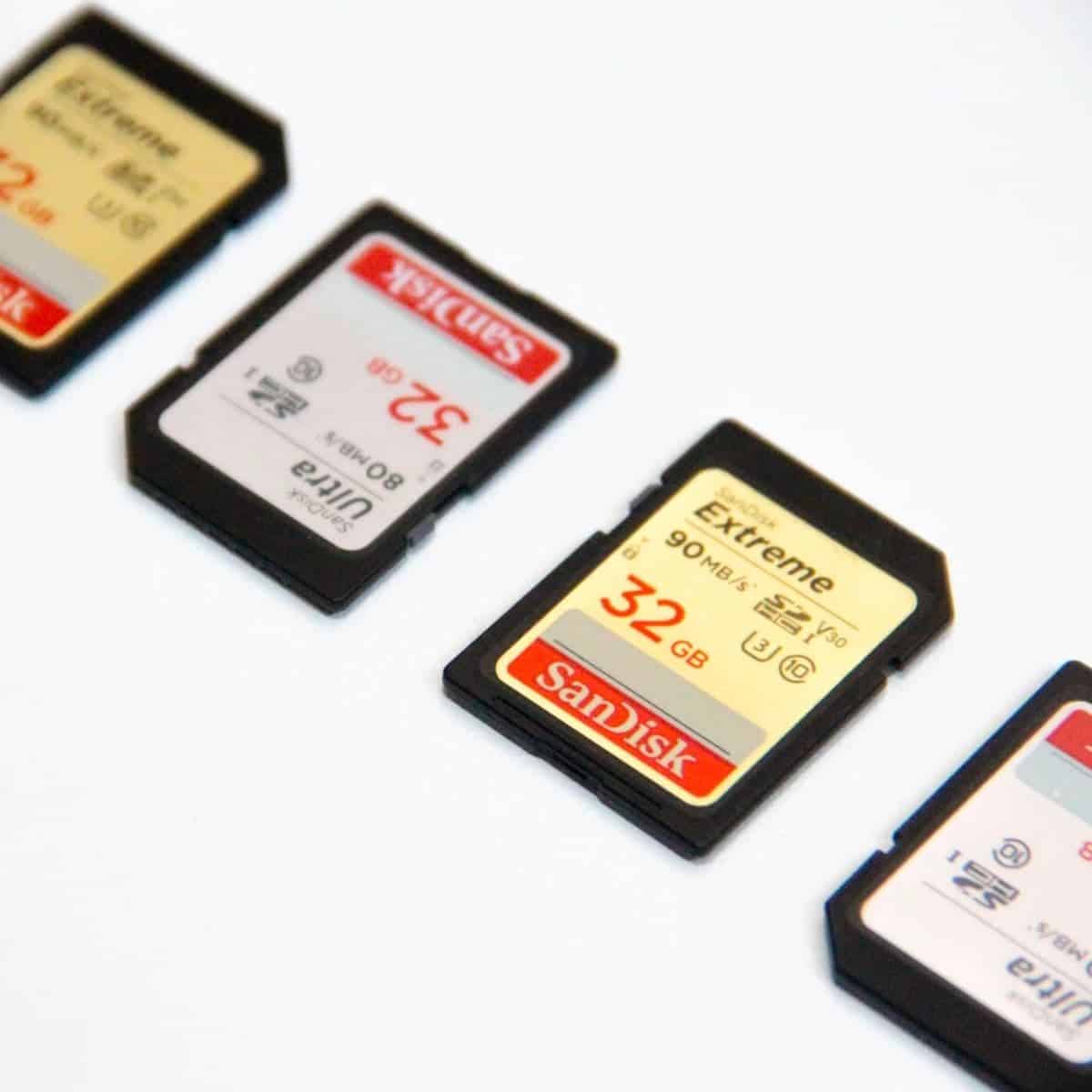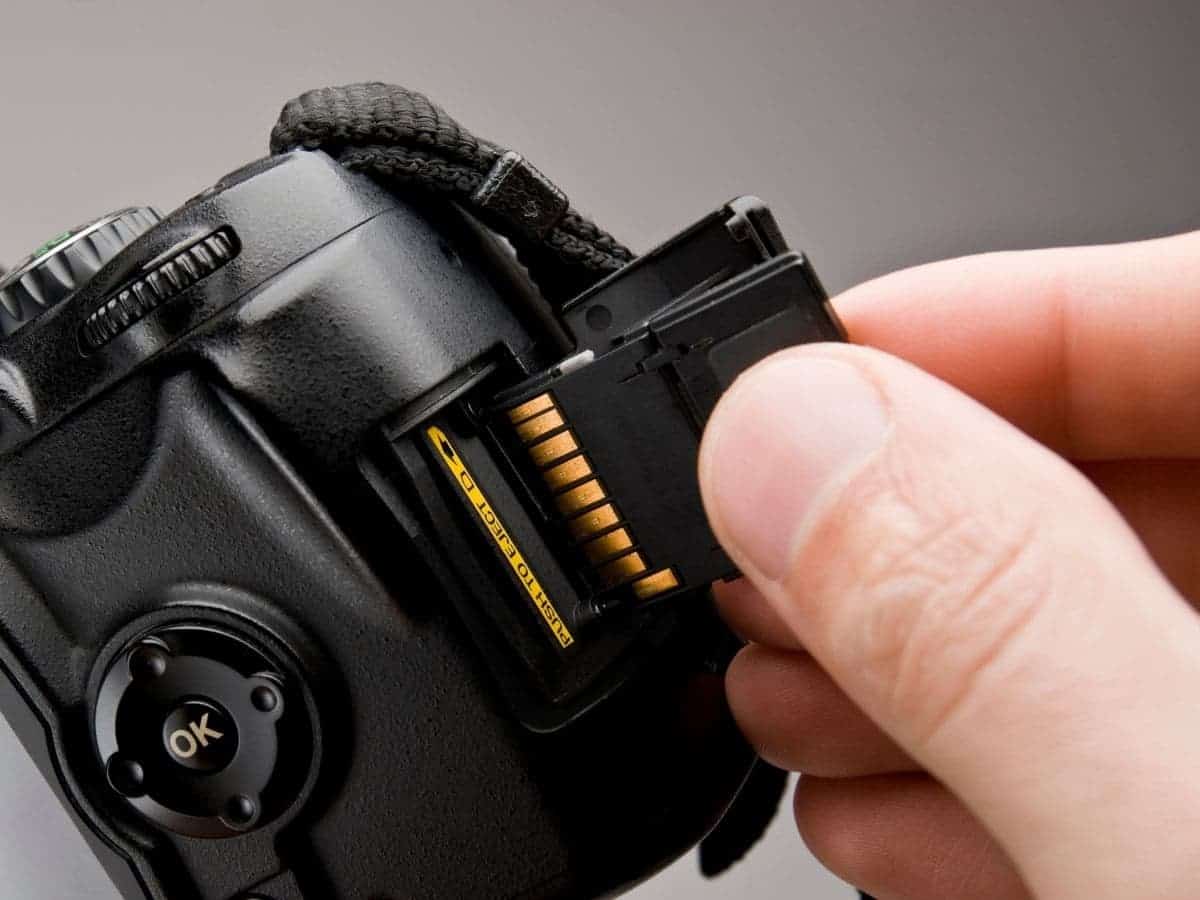The capacity of a memory card determines how much data can be stored. Learn how many photos can be stored in common capacities.

In photography and videography, memory cards are important because they store information, such as photos, videos, and audio recordings.
Memory cards come in various sizes, storage capacities, and transfer speeds. The one you choose depends on your needs.
Related article: The best memory card readers in 2022
Learn what the different storage capacities mean and how they relate to real-life usage.
Also, find out why speed is crucial and how to pick the right memory card.
Related article: What’s a PSD file, and how do I open one?
Memory card storage capacity for pictures

When it comes to the number of images a memory card can store, it depends on many factors.
The main factor is the file size of each image that your camera captures. RAW files are larger than JPEG.
Related article: How to use back-button focus
So, to get an estimate of how many pictures you can take on your memory card, take a photo and upload it to your phone or computer to determine the file size.
One gigabyte (GB) is equivalent to 1,000 megabytes (MB).
Related article: Negative space in photography: The ultimate guide
To calculate the number of images that your memory card can store, convert the gigabytes to megabytes and divide by the size of one file in megabytes.
The result is your memory card’s image capacity based on the file size.
In the following table, 20 MB and 60 MB are used as the file sizes for the example.
| Memory card storage capacity | Number of 20 MB images | Number of 60 MB images |
|---|---|---|
| 16 GB | 800 | 266 |
| 32 GB | 1,600 | 533 |
| 64 GB | 3,200 | 1,066 |
| 128 GB | 6,400 | 2,133 |
| 256 GB | 12,800 | 4,266 |
| 512 GB | 25,600 | 8,533 |
Again, the number of images a memory card can hold depends on the file size. If each file takes up more space, it’ll quickly fill up the memory card.
File size comparison: JPEG vs. RAW
Digital cameras shoot and save images in JPEG or RAW. A RAW image file is typically uncompressed and contains minimal processing.
The universal RAW file format is a DNG, and some brands have their own file extension. Canon has CR3 and CR2 and Nikon has NEF.
Additionally, RAW files have different bit depths, as they range from 12-bit to 16-bit, with the latter being larger.
Since RAW images retain all of the raw image information and are uncompressed, they’re big file sizes.
A Joint Photographic Experts Group (JPEG) image file is compressed, and it’s the most widely-used image format.
JPEG files go through lossy compression, which causes a slight loss in detail in exchange for smaller file sizes. However, you can select different quality options, such as standard, fine, or extra-fine.
Higher-quality JPEGs will create bigger file sizes than lower-quality ones. RAW files are bigger than JPEGs.
Before you choose a memory card, consider the types of images you shoot.
Related article: 10 best camera hand straps
Memory card speed also matters
While storage capacity is an important factor, so is speed. Memory cards have different read and write speeds.
Read speed determines how quickly a memory card can transfer data to a reader, such as a computer.
Write speed determines how fast images can be saved onto the memory card.
If you have a slow write speed, the time from taking the picture to seeing the preview will be longer than faster write speeds.
Related article: What’s cropping in photography?
The SD Association categorizes memory cards into three classes, Speed Class, Ultra High Speed (UHS) Speed Class, and Video Speed Class.
Each class has classes, which represent the write speed. You can find the number on the front of the memory card.
The following are the classes and write speeds within Speed Class:
- Class 2: 2 MB per second.
- Class 4: 4 MG per second.
- Class 6: 6 MB per second.
- Class 10: 10 MB per second.
The following are the classes and write speeds within UHS Speed Class:
- Class 1 (U1): 10 MB per second.
- Class 3 (U3): 30 MB per second.
The following are the classes and write speeds within Video Speed Class:
- V6: 6 MB per second.
- V10: 10 MB per second.
- V30: 30 MB per second.
- V60: 60 MB per second.
- V90: 90 MB per second.
Additionally, there are microSD and CF cards. Regardless of the type of memory card you buy, make sure it’s fast enough for your needs. Read and write speeds determine your efficiency.
Related article: How to transfer a photo onto glass
Types of memory cards
Now that you understand how to calculate the number of images a memory card can hold and the importance of speed, the following explains the different types of memory cards.
Related article: How to hire an associate photographer
CompactFlash (CF)
CF cards use flash memory technology to store data. It was developed by SanDisk in 1994 and doesn’t require a battery.
CF cards are popular because of their higher storage capacities.
Secure Digital (SD)
SD cards are currently the most popular memory card type.
Secure Digital High Capacity (SDHC) and Secure Digital Extended Capacity (SDXC) are the most common types that you’ll see because of their higher storage capacities.
SD cards tend to be cheaper than CF cards and provide sufficient storage for most photographers and videographers.
microSD
microSD is the smallest flash memory card. It’s a miniature form of the SD card and is meant for smaller electronic devices.
Many microSD cards come with an adapter that allows you to connect them to a regular SD slot.
Conclusion
The storage capacity of a memory card determines the number of images, audio, and video recordings you can store.
While it depends on the file size and memory card capacity, it ranges from a few hundred to tens of thousands of images.
If you’re like most photographers and regularly format your memory card, 32 GB of storage is sufficient. If you shoot videos or take a ton of pictures, consider 64 to 256 GB.
Featured image courtesy of Unsplash.
